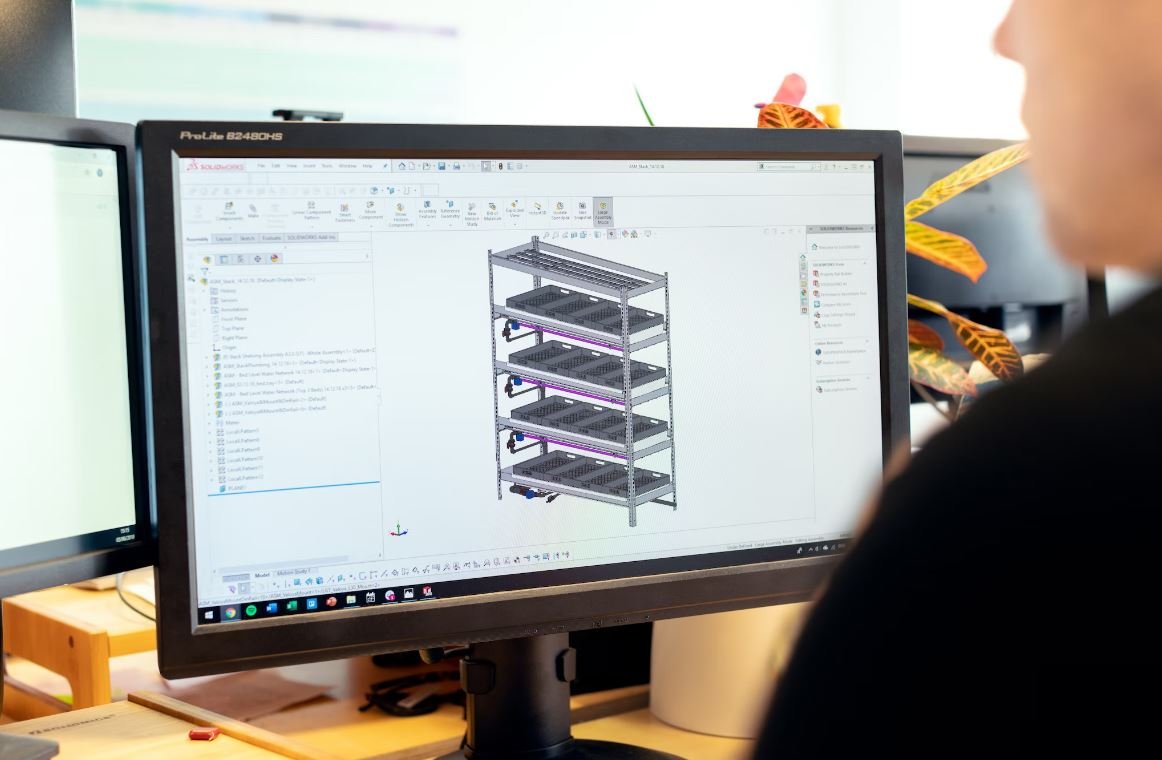Production Vocabulary
When it comes to manufacturing and industrial production, there is a unique set of vocabulary that is commonly used in the industry. Whether you are working in a factory or dealing with suppliers, understanding these terms is essential to communicate effectively and navigate the production process smoothly.
Key Takeaways:
- Production vocabulary is crucial for effective communication in the manufacturing industry.
- Understanding these terms helps navigate the production process smoothly.
- Familiarity with production vocabulary aids in dealing with suppliers and other industry professionals.
Manufacturing involves various stages and processes, each with its own specialized terminology. From design and prototyping to assembly and quality control, having a grasp of the production vocabulary is vital. Here are some key terms you should know:
1. Bill of Materials (BOM)
A bill of materials is a comprehensive list of all the components, parts, and materials needed to build a product. It includes information such as part numbers, quantities, and descriptions. The BOM serves as a reference document for procurement and production planning.
2. Lead Time
Lead time, measured in days or weeks, represents the time it takes for a product or component to be manufactured or delivered. It includes the production time, transportation, and any other delays during the process. Understanding lead time is essential for production scheduling and managing customer expectations.
3. Just-in-Time (JIT)
Just-in-Time is a production strategy aimed at minimizing inventory and reducing waste. It involves producing and delivering products only when they are needed, thereby reducing storage costs and improving efficiency. JIT relies on accurate forecasting and efficient supply chain management.
| Pros | Cons |
|---|---|
| Reduces inventory costs | Increased risk of stockouts |
| Improves cash flow | Dependency on suppliers |
| Minimizes waste | Tighter coordination and planning required |
4. Quality Control
Ensuring product quality is of utmost importance in manufacturing. Quality control involves a series of measures implemented to maintain consistent quality throughout the production process. These measures include inspections, testing, and adherence to predetermined standards and specifications.
5. Kanban
Kanban is a visual scheduling system used to manage and control workflow efficiently. It involves the use of cards or signals to indicate production needs and progress. Kanban helps in identifying bottlenecks, reducing idle time, and maintaining a smooth production flow.
6. Manufacturing Lead Time
The manufacturing lead time is the time it takes to produce a finished product from the release of the production order. It includes all the internal activities required, such as material procurement, production, and assembly. By monitoring and optimizing manufacturing lead time, companies can improve efficiency and meet customer demands more effectively.
| Industry | Average Lead Time |
|---|---|
| Automotive | 12-16 weeks |
| Consumer Electronics | 2-4 weeks |
| Textiles | 4-8 weeks |
Mastery of production vocabulary enhances communication and streamlines production operations. By familiarizing yourself with these terms and concepts, you can engage effectively in discussions with industry professionals, suppliers, and coworkers. From understanding lead times and quality control to optimizing manufacturing processes, a strong foundation in production vocabulary will undoubtedly benefit your endeavors in the manufacturing industry.

Common Misconceptions
1. Production Vocabulary
There are several common misconceptions surrounding the topic of production vocabulary. One of the most prevalent misconceptions is that production vocabulary is only important in the manufacturing industry. However, production vocabulary is relevant in various sectors, including film and television production, event management, and software development.
- Production vocabulary is essential for effective communication and coordination between team members.
- Understanding production vocabulary allows individuals to accurately convey their ideas and requirements.
- Knowledge of production vocabulary helps streamline processes and avoids misinterpretations and delays.
2. Technical Jargon
Another common misconception is that technical jargon and production vocabulary are the same. While technical jargon may be a part of production vocabulary, it is not the entirety of it. Production vocabulary encompasses a broader range of terms and phrases specific to various industries and their respective production processes.
- Technical jargon refers to specific terms and phrases used within a particular field of expertise.
- Production vocabulary extends beyond technical jargon to include general terms and concepts related to the production industry.
- Understanding technical jargon is important, but it should not overshadow the significance of overall production vocabulary.
3. Limited Importance
Some individuals may believe that having a strong understanding of production vocabulary is not essential for their roles or careers. However, regardless of the industry or job function, having a working knowledge of production vocabulary can be beneficial in many ways.
- Production vocabulary strengthens collaboration and teamwork within projects.
- Knowing production terminology enhances problem-solving abilities and facilitates effective decision-making.
- Having a grasp of production vocabulary improves overall communication skills, making individuals more effective in their roles.
4. One-Size-Fits-All
Another misconception is that production vocabulary is standardized across all industries. In reality, production vocabulary can vary significantly depending on the industry and specific job functions within it. Different sectors will have their own unique terms and phrases specific to their production processes.
- Production vocabulary is sector-specific and tailored to each industry’s unique production requirements.
- Terms and phrases within production vocabulary may differ even within the same sector but across different departments or job roles.
- Understanding industry-specific production vocabulary is crucial for effective communication within that particular field.
5. Exclusively Technical
Lastly, there is a misconception that production vocabulary is exclusively technical in nature. While there are technical terms and concepts within production vocabulary, it also includes broader terms related to project management, scheduling, logistics, and quality control.
- Production vocabulary encompasses technical terms, as well as general production-related terms.
- It includes concepts such as project timelines, resource allocation, budgeting, and risk management.
- A comprehensive understanding of both technical and non-technical production vocabulary is crucial for professionals in the industry.

Production Vocabulary
Production vocabulary consists of terms and phrases used in the field of manufacturing and production processes. Understanding this vocabulary is crucial for professionals in the industry to communicate effectively and efficiently. The tables below provide insightful information and data about different aspects of production terminology.
Production Process Stages
The following table illustrates the different stages involved in a typical production process, from concept to final product:
| Stage | Description |
|---|---|
| Conceptualization | The initial phase where ideas and concepts for a product are brainstormed. |
| Design | The creation of detailed plans and specifications for the product. |
| Prototyping | The development of a physical or digital model of the product for testing. |
| Manufacturing | The production of the final product using specialized equipment and processes. |
| Quality Control | The careful inspection and testing of the product to ensure it meets the desired standards. |
| Packaging | The process of preparing and packaging the product for shipping and distribution. |
| Distribution | The logistics and delivery of the product to retailers or customers. |
Types of Manufacturing Processes
This table showcases different types of manufacturing processes and their characteristic features:
| Process | Description |
|---|---|
| Injection Molding | A manufacturing process where molten material is injected into a mold to produce complex shapes. |
| Casting | The pouring of a liquid material into a mold and allowing it to solidify into the desired shape. |
| Machining | The process of shaping and finishing a material using various cutting tools and techniques. |
| Extrusion | A process where a material is forced through a die to create a continuous profile. |
| Assembly | The joining of multiple components to create a finished product. |
| Forming | The process of reshaping a material by applying force or pressure. |
| Joining | The process of combining two or more materials to create a cohesive structure. |
Lean Manufacturing Principles
The following table highlights the core principles of lean manufacturing:
| Principle | Description |
|---|---|
| Value | Identifying the specific value that the customer expects from the product. |
| Flow | Ensuring a smooth and efficient flow of materials and processes. |
| Pull | Producing items based on customer demand to avoid overproduction. |
| Standardization | Implementing standardized processes and procedures to minimize variations. |
| Elimination of Waste | Identifying and eliminating any activities or processes that do not add value to the product. |
| Continuous Improvement | Constantly seeking ways to enhance productivity and quality through small incremental changes. |
| Respect for People | Valuing and empowering employees to contribute their knowledge and skills. |
Types of Quality Control Techniques
This table presents various quality control techniques used in production:
| Technique | Description |
|---|---|
| Statistical Process Control (SPC) | A statistical method that monitors and controls the quality of a product during the manufacturing process. |
| Failure Mode and Effects Analysis (FMEA) | A systematic approach to identify and mitigate potential failures or defects in a product or process. |
| Six Sigma | A data-driven methodology that aims to reduce defects and variations in a production process. |
| Poka-Yoke | A technique that employs simple devices or mechanisms to prevent errors or mistakes from occurring. |
| 5 Whys | A problem-solving technique that involves repeatedly asking “why” to identify the root cause of an issue. |
| Control Charts | Visual representations that monitor and display process variations to maintain quality control. |
| Inspection | A method of examining a product or process to ensure it meets the desired specifications. |
Types of Production Costs
The table below showcases different types of costs involved in production:
| Cost Type | Description |
|---|---|
| Direct Materials | The cost of raw materials directly used in the production process. |
| Direct Labor | The cost of labor specifically engaged in the production of goods or services. |
| Indirect Materials | The cost of materials used in production but not directly incorporated into the final product. |
| Indirect Labor | The cost of labor indirectly associated with production processes, such as supervision or maintenance. |
| Overhead Costs | The miscellaneous costs necessary to sustain and support production activities. |
| R&D Expenses | The costs incurred for research and development of new products or processes. |
| Distribution Costs | The expenses related to transporting and delivering products to customers or retailers. |
Common Production Metrics
This table provides a selection of key performance indicators used to measure production efficiency:
| Metric | Description |
|---|---|
| Overall Equipment Efficiency (OEE) | A measure of how effectively a machine or equipment is being utilized during production. |
| Throughput | The rate at which a system, machine, or process can produce output within a given time frame. |
| Defect Rate | The percentage of defective items produced during a specific period. |
| Cycle Time | The total time required to complete a unit of production, from start to finish. |
| Capacity Utilization | The degree to which a production system, machine, or resource is being used in relation to its maximum potential. |
| First Pass Yield | The percentage of products or units that pass quality inspection on the first attempt. |
| Lead Time | The time taken for an order or product to move through the production process, from initiation to completion. |
Common Production Defects
The table below lists some common defects that can occur during the production process:
| Defect | Description |
|---|---|
| Scratch | A shallow mark or damage on the surface of a product. |
| Crack | A partial or complete break or fracture in a product. |
| Warping | The distortion or deformation of a product due to uneven cooling or stress. |
| Misalignment | The improper positioning or arrangement of components or parts. |
| Misassembly | The incorrect joining or attachment of different elements in a product. |
| Incomplete Curing | The inadequate or incomplete hardening of a material or adhesive. |
| Bleeding | The unwanted migration or seepage of materials or colors in a product. |
Production Lead Times by Industry
This table presents average production lead times for different industries:
| Industry | Average Lead Time (in weeks) |
|---|---|
| Electronics | 3.5 |
| Automotive | 6.2 |
| Apparel | 4.8 |
| Furniture | 5.1 |
| Pharmaceuticals | 8 |
| Food and Beverage | 2.9 |
| Medical Devices | 9.3 |
Customer Satisfaction Ratings by Company
The following table showcases customer satisfaction ratings for various companies in the production industry:
| Company | Customer Satisfaction Rating (out of 10) |
|---|---|
| Company A | 8.7 |
| Company B | 7.9 |
| Company C | 9.2 |
| Company D | 6.5 |
| Company E | 9.8 |
| Company F | 7.1 |
| Company G | 8.9 |
Conclusion
In the dynamic field of production, a comprehensive understanding of production vocabulary is essential for effective communication and successful operations. From the stages of the production process to quality control techniques and production metrics, each aspect plays a vital role in ensuring efficient and quality-driven operations. By familiarizing oneself with these terms and concepts, professionals can navigate the world of production with expertise and precision, leading to improved productivity and customer satisfaction.
Frequently Asked Questions
What is production?
Production refers to the process of converting raw materials or inputs into finished goods or products through various activities and operations.
What are the key stages of production?
The key stages of production typically include sourcing or procurement of raw materials, design and planning, manufacturing, quality control, packaging, and distribution.
What is the importance of production in business?
Production is crucial for businesses as it allows them to create the products or services they offer to customers. It ensures the availability and supply of goods, generates revenue, stimulates economic growth, and contributes to job creation.
What is a production line?
A production line is a sequential arrangement of workstations or machines where products move through each station, with each workstation performing a specific task to gradually transform the raw materials into finished products.
What is capacity utilization in production?
Capacity utilization in production measures the extent to which a company is utilizing its available resources to produce goods. It is calculated by dividing actual output by the maximum potential output and is often expressed as a percentage. Higher capacity utilization indicates efficient use of resources.
What is lean production?
Lean production is a manufacturing philosophy that focuses on eliminating waste, reducing costs, and improving efficiency by continuously streamlining processes and maximizing the value delivered to customers. It emphasizes the concept of doing more with less and improving quality.
What is just-in-time (JIT) production?
Just-in-time (JIT) production is a production strategy where materials and components are received and processed right before they are needed in the production process. It aims to reduce inventory costs and waste by maintaining minimal stock levels and ensuring timely delivery of materials.
What is meant by economies of scale in production?
Economies of scale in production refer to the cost advantage obtained when a company produces goods on a larger scale, leading to lower average production costs per unit. It is achieved through increased efficiency, bulk purchasing, utilization of specialized machinery, and spreading fixed costs.
What is total quality management (TQM) in production?
Total quality management (TQM) is an approach that focuses on continuous improvement of product quality through the involvement of all members of an organization. It emphasizes customer satisfaction, defect prevention, waste reduction, and teamwork.
What role does technology play in production?
Technology plays a vital role in production by enabling automation, precision, and efficiency. It enhances manufacturing processes, facilitates data management, improves communication, supports innovation, and contributes to the development of advanced production techniques.




